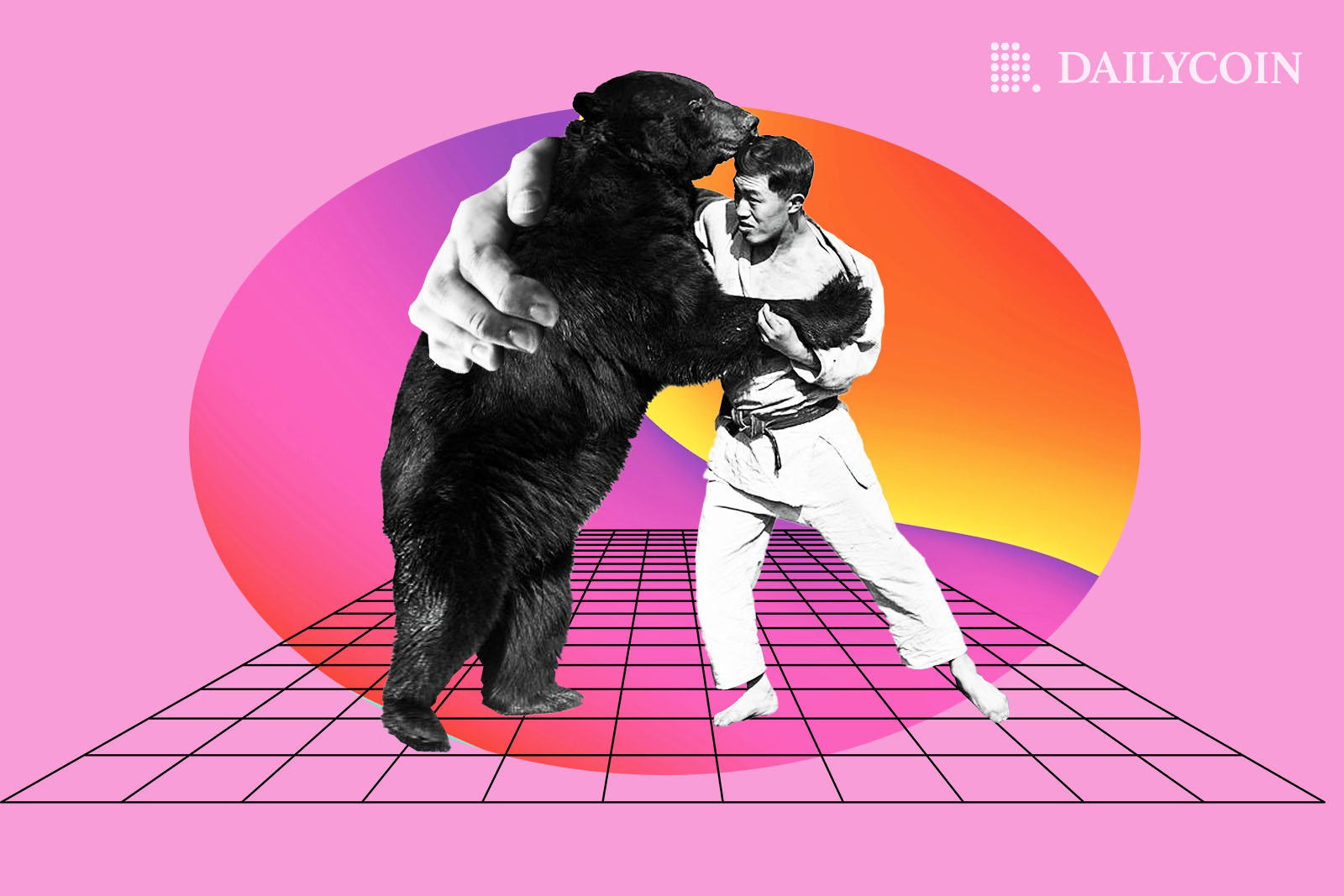
It is very difficult to explain when the current crypto bear market started for most people. Many analysts understood that things were going to get bad quickly after meme coins started doing billions in market cap. But others only started panicking much later when the global market capitalization of crypto dropped below the $2 trillion mark in January 2022.
Then the Luna/Terra implosion happened, and even those who knew little about crypto understood a simple fact; the bear market was here. And it was bad. By the time FTX got crunched, bearish conditions were a foregone conclusion.
Today, the question most people want to be answered is this; when will this bear market end? The answer doesn’t depend exclusively on crypto.
Bitcoin, Bears, and Billions; A History Of Bear Markets
History has a lot to teach us about cryptocurrency bear markets. This is not crypto’s first time in the doldrums of value, and it’s unlikely to be the last. Just like the stock markets, the crypto markets experience times of extraordinary growth and loss.
Sponsored
Since Bitcoin prices are as good an approximation of health as any, we’ll be tracing the rises and falls of Bitcoin up until this point to know just how long bear markets generally last.
2011
Sponsored
The first real bear crash was when Bitcoin went from being worth around $32 to around $0.01.
In essence, the coin lost almost one hundred percent of its value. At the time, the coin was barely two years old and there was a lot less market support for cryptocurrencies as a whole.
The extraordinary thing about that bear market was that the coin went from $1 to be worth $32 in about three months. This represents a 3200% growth.
And the crash to $0.01 happened in just a few days. The crash was largely due to security concerns at a Japanese exchange, which had lost around 850,000 bitcoins in a hack. This destroyed market support for Bitcoin. The crash did not last for too long however, as Bitcoin hit that $32 mark again in 20 months.
2015
Bitcoin had an amazing time from February 2013 to November 2013. It went from around $32 to $1,000 in just a few months. That was extraordinary growth, and this cycle made a lot of financial institutions sit up. However, the coin, and the market it led, had not been tested at that level.
And it almost fell apart when it experienced its first test. Shortly after getting to $1,000, another bear market was triggered. This time it was because the Chinese Central Bank was cracking down on crypto. The bank prohibited local financial institutions from handling BTC transactions, thereby driving BTC traders underground.
That bear market continued for a while yet and drove the coin to a low of $170 in January 2015. However, Chinese distrust of Bitcoin wasn’t the only factor afoot. The same Japanese exchange that caused the bear market in 2011 got hacked again, which led to a prolonged bear market as crypto lost legitimacy.
Bitcoin eventually returned to the $1,000 mark and the crypto market eventually got its mojo back around the same time, but this took a full three years.
2018
The next bear market came shortly after Bitcoin reached new dizzying heights. The coin, and the crypto market with it, blitzed past the $1,000 mark and reached $20,000.
Several other coins reached all-time highs as well. By the end of 2017, ETH was trading at around $700, surpassing its ATHof $330 in June of the same year.
But the next bear market hit by the beginning of 2018, and ETH went as low as $155. Bitcoin also hit $3,200 around the same period.
However, by the middle of 2019, the market was growing again. While the market would only reach previous highs at the end of 2020, the interim period was one of sure growth.
The 2018 crypto winter, as it was called, was the most devastating crypto crunch up until that point. Interestingly, this winter also kicked off with another Japanese crypto exchange suffering a gigantic hack.
As Facebook and Google banned ads for ICOs and token sales ads, things got even worse for the market. Global crypto regulations contributed to the market and the SEC began rejecting applications for BTC exchange funds.
Why Bear Markets Happen; Security And Regulations
History has shown us that the two things that lead to bear markets are concerns about safety and regulations by governments. When these two factors combined, crypto got its long winters of falling prices in 2013 and 2018.
Security
Security concerns are probably the most important issue in crypto. People understand the shortcomings of traditional finance. They know that inflation could eat their money whenever the government wants it to.
However, traditional finance offers them safety like no other. Even when bank runs happen, the banks usually have a lender of last resort. They also often have deposit insurance that can cover withdrawals. And if all fails, these banks can simply go to the government for bailouts.
Crypto does not have this faux safety, so panic sales are common when there is a widespread belief that the system is systematically unsafe.
Regulations
Crypto is the first attempt at creating a decentralized currency in human history. As such, many governments, whose power stems from printing currency, do not know how to deal with its ecosystem.
This confusion usually leads to a stream of regulations that either fail to work or hobble the ecosystem so badly that it cannot work anymore. Asides from that, government uncertainty regarding crypto means that institutional players in the ecosystem don’t have compliance guidance and are stuck in limbo.
This could lead to widespread distrust in the system and could trigger a bear market.
The 2022 Bear Market
There might be some temptation to find a kind of rhythm in the occurrences of bear markets. After all, the bear markets of 2013, 2018, and now 2022 have about four to five years between them.
Those two bear markets lasted for more than 20 months each. That means prices fell for twenty months straight at least. While that does not tell us too much about how long this bear market could last, it tells us something about how long prices could fall.
The unique thing about the bear market we are currently in is that it wasn’t caused by security concerns or regulatory uncertainty. While certain hacks have certainly prolonged it and spread FUD in the market, the current fall in prices had to do with other factors.
It appears that prices started falling rapidly when energy prices started rising after the Russian invasion of Ukraine. Prices fell faster when the federal reserve started hiking rates to control inflation.
Ordinarily, these are traditional finance issues and shouldn’t affect crypto. But the massive investment in crypto by institutional finance players in 2020 meant that the system was highly correlated with traditional financial markets. Right now, Bitcoin’s correlation to the NASDAQ and S&P 500 rests at 0.5
In layman’s terms, the bear market happened because the traditional economy experienced a bear market. Since a lot of traditional institutions are in crypto, the ecosystem suffered as well. As the federal reserve raised interest rates, people stopped investing in risky assets like crypto and many cashed out.
This spread FUD across the market and people started executing stop losses against their trades. Lastly, a slew of hacks caused even more FUD in the market capital to start leaving the market in droves.
Of course, other factors, like the Chinese banning Bitcoin mining and the SEC going after tokens like Ripple contributed as well.
When Will This Bear Market End?
So, when will this bear market end? We know from history that it could last for as long as twenty months, or perhaps even more. We also know that it could take up to five years to reach previous all-time levels. And we know that it would take as little as 20 months as well.
We are aware that this bear market is highly correlated with inflation in traditional finance markets. It follows that if those markets bounce back and the feds relax rates, crypto should see a spring in its steps. That could be what triggers the next bull run.
However, it’s a bit more complex than that. There is significant FUD in the market, so it may take a long time for exchanges and projects to get people and institutions to trust them. If that doesn’t happen, crypto might recover—but it will struggle to reach previous highs.
On the Flipside
- Some technical analysts argue that the bear market should be done by November or December 2022.
- The recovery of traditional financial markets doesn’t necessarily mean the bear market will be over with.
Why You Should Care
If you hold funds in crypto (or plan to invest) you should care about how long the bear market will last. It will most likely determine the size of your investment and your long-term crypto plan.
Conclusion
It’s impossible to pinpoint an exact time that the bear market could end. If it were possible, very few people would know as it would be a closely gathered secret. However, we can come to a few conclusions as to what can trigger a bull market and end the bear market, and under what conditions that trigger could be pulled.
